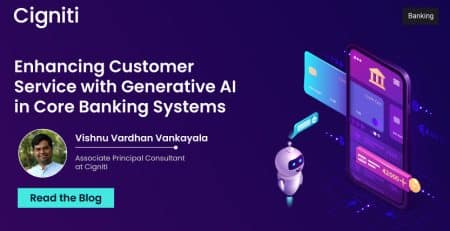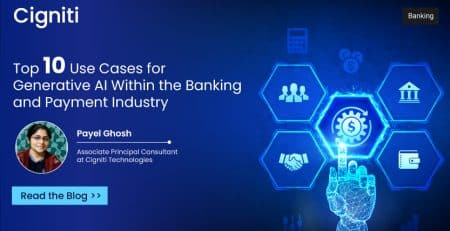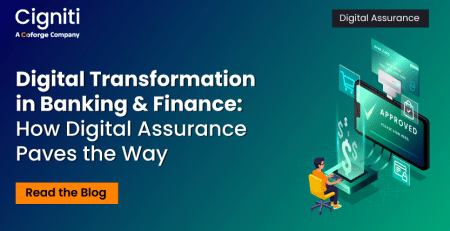The Role of BIAN in Open Banking and Composable Banking
Interoperability in banking and finance is multifaceted, uptight, and fraught with many menaces, risky projects, and prominent vendors. One such solution is Open banking. Open banking is a mode where banks provide a set of consistent and standardized interfaces to permit service providers and third parties into their banking services. It is about opening up large banks’ banking services to third-party providers, application developers, and end users. The change is being shaped through regulation in most nations and geographies. It is designed to create an atmosphere where third-party providers can make more functionality and better solutions for the end user and consumer than banks provide in the industry.
There’s still quite a dependence on banks. Therefore, open banking interfaces are critical to giving them the standards, compliance, directives, and risk mitigation they require while being very open and composable. To address the ever-changing consumer needs, composable banking acts as a plug-and-play where individual customer needs are entertained; new components can be reused, restructured, modernized, updated, and replaced with other components, ensuring quick deployment of the intended simple solutions.
What is BIAN
BIAN looks to solve these problems of creating simplicity from complexity in the banking and financial services industry and lends support to Open Banking and Composable Banking architectures. This is achieved by decomposing a bank’s various proficiencies from an exhaustive list of its members of some of the world’s largest banks and financial service providers. And it decomposes these into service domains. Then, we go further into API specifications that are free and open to use.
BIAN is a not-for-profit organization with a group of experts and service providers in the financial industry. They’ve created a comprehensive, exhaustive services set for the banking and financial services industry. They are called service domains. Each service domain is starting to create open API specifications for the interface interaction and collaboration with those service domains, which supports the open banking initiative by providing those standardized interfaces. These resources are freely and readily available. BIAN member organizations contribute to these; they’re made up of the world’s top banking and finance services firms through partnerships. And they’re maintained and released on a yearly cycle at the moment.
What are the Banking Challenges that BIAN can solve?
- Banking Industry Architecture Network has such a large landscape of services. They’ve created a service for every capability a bank could reasonably be provided to achieve. But no one bank, unless it’s a vast multinational, will implement every service domain. So, as a prerequisite, we need a solution that allows the consumer to choose which domains to implement. And because BIAN has chopped its capabilities into such well-defined, bounded contexts and frameworks, deploying the service domain of your choice is critical to start implementing BIAN without needing to boil the entire sea and deploy everything.
- The application developers, banks, and third-party providers can download these and generate solutions based on them that are fundamentally reusable and intrinsically interoperable. The interoperability this delivers offers a lower cost of effort and minimal time to develop composable solutions in the BFS sector (banking).
- BIAN aims at creating a standardized model for banks to use. Banking architecture & framework conventionally was very process-oriented and unable to adapt to the changing customer needs. As the processes within a bank expanded, the architecture became very twisted and fragile. Composable Banking and BIAN together do the modeling of the interactions & communication between these service domains; it is much easier to prototype.
BIAN & Open Banking APIs
How does Open Banking matter in the context of BIAN?
Financial societies and institutions operating in Europe are required to adopt Open Banking standards.
Financial institutions worldwide have begun accepting and adopting Composable Banking Standards.
BIAN APIs streamline the adoption of the above standards considering the modern banking interoperability for global banks. BIAN APIs need the hour to simplify digital transformation.
How can banks and financial organizations use this to their advantage?
The command line interface (CLI) manages the configuration changes. It helps integrate the BIAN assets and allows us to create APIs directly in the FinTech or bank API dev portal. The APIs serve operations, products, customers, and channels across the business processes and are 80%-90% reusable.
Hence, these are itemized and registered directly. After the registration point, we can maintain them exclusively on a per-interface basis instead of the exhaustive, comprehensive list or in its entirety. This allows us the flexibility of selecting to update only those interfaces that matter to the bank, Fintech, or its consumers very quickly and efficiently. As it is in place now, it drastically reduces the total cost of ownership of having the external API Gateway and the need for multiple open banking interfaces.
The minute you’ve shaped open banking interfaces for the consumers on the other end, there can be a soaring high cost to sustaining and maintaining them. With the interfaces in place, it’s tough to take them away.
An easy-to-use CLI allows you to go and maintain the interfaces, create and delete them as per the fitment without going through processes, and manage the changes.
CLI removes much of the hard work needed to use the BIAN standards. Instead of interpreting how the bank’s interfaces will look, the banks or fintechs can look towards what BIAN offers and has made available. BIAN substitutes a lot of the overhead of designing the interfaces themselves.
Conclusion
Cigniti delivers all-inclusive, flexible, high-performance validation solutions that cater to broader open finance technologies like BIAN implementation, Open Banking, API-First Banking, and Composable Realtime Banking to enable the banks and fintechs to adapt to the needs of the new generation of consumers instantly.
Need help? Schedule a discussion with our Banking experts to learn more about the role of BIAN in Open Banking and Composable Banking.





Leave a Reply